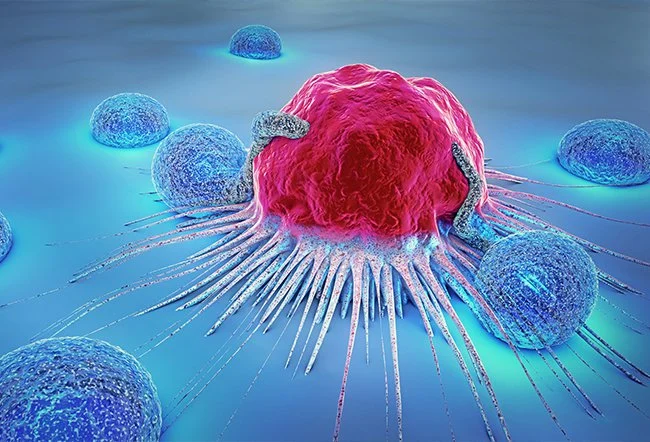
Lymph nodes are immune system components that act as filters for potentially harmful substances. They aid in the fight against infection by attacking and destroying germs that enter the body via lymph fluid. There are, in fact, hundreds of lymph nodes throughout the body. Through nodes located all across the body, lymph veins transport lymph fluid. The lymph nodes filter foreign things like cancer cells and pathogens. They contain immune cells that can fight infection by combating and eliminating pathogens from lymph fluid. Numerous body areas, including the neck, armpit, chest, abdomen (belly), and groin, are home to lymph nodes. There are two ways that cancer might affect the lymph nodes: it can either begin there or spread there from another location. Lymphoma is a type of cancer that develops in the lymph nodes. More frequently than not, cancer begins elsewhere and subsequently spreads to the lymph nodes.
Also Read: How Fast Do Cancerous Lymph Nodes Grow?

Lymph node cancer can occur in two ways:
Also Read: How Serious is Cancer in the Lymph Nodes?
Cancerous lymph nodes caused by Hodgkin's lymphoma exhibit the following signs and symptoms:
Lymphoma is, in fact, a cancer of the lymphatic system. The lymphatic system is, however, a part of the immune system.
Lymph nodes (lymph glands), the spleen, the thymus gland, and bone marrow are all part of the lymphatic system. All of these areas and other organs throughout the body can be affected by lymphoma.
There are numerous types of lymphoma. The following are the main subtypes:
However, what lymphoma treatment is the most appropriate for you is determined by the type and severity of your lymphoma. Chemotherapy, immunotherapy medications, radiation therapy, a bone marrow transplant, or a combination of these may be used to treat lymphoma.
The below mentioned are the signs and symptoms of cancerous lymph nodes caused by non-Hodgkin lymphoma:
Cancer in lymph nodes can also be lymphoma. However, lymphoma is not confined to lymph node cancer alone. Lymphoma is cancer found in the bone marrow, lymph nodes, spleen, thymus, and other organs. Cancer in lymph nodes can be lymphoma, but lymphoma cannot always be cancer in the lymph nodes.
Lymph node swelling occasionally has a connection to cancer. Some malignancies develop in lymph nodes first. Acute lymphocytic leukemia, non-Hodgkin lymphoma, and Hodgkin lymphoma are all lymph system malignancies.
More frequently, cancer spreads from another part of the body and manifests as a metastasis in the lymph nodes. Occasionally, cancerous cells leave a tumour and spread to new areas. These cancer cells may circulate in the blood and get to other organs or pass through the lymphatic system and get to lymph nodes.
When a lymph node has cancer, a biopsy can assist in identifying the specific type of cancer present when the removed tissue or node is inspected under a microscope. Breast cancer cells in the lymphatic system will still appear to be breast cancer because they will resemble the cancer cells of the tumour from which they came.

Also Read: How Fast Do Cancerous Lymph Nodes Grow?
The following are some of the causes of Hodgkin's lymphoma and non-Hodgkin lymphoma:
The following are risk factors for developing Hodgkin's lymphoma:
Lymph nodes are typically small and difficult to locate. Nodes can enlarge due to infection, inflammation, or cancer, and if they are close to the body's surface, they may be large enough to feel with the fingers. Some may even be large enough to be noticed.
When there are, however, only a few cancer cells in a lymph node, the only way for a doctor to check for cancer is to remove the lymph node entirely or in part.
Doctors may also use needles to collect samples from one or more nodes. Scan scans or other imaging tests may be used to look for enlarged nodes deep in the body.
Medical treatment for cancerous lymph nodes varies according to the type of cancer and the stage of the disease and even may include one or more of the following:

Exploring Nuclear Medicine Scans for Cancer Diagnosis: A Comprehensive Guide
For personalized guidance on cancer treatments and complementary therapies, consult our experts at ZenOnco.io or call +91 9930709000
Reference:
Qureshi FG, Newman KD. Lymph Node Disorders. Pediatric Surgery. 2012:73743. doi: 10.1016/B978-0-323-07255-7.00057-X. Epub 2012 Feb 17. PMCID: PMC7158302.